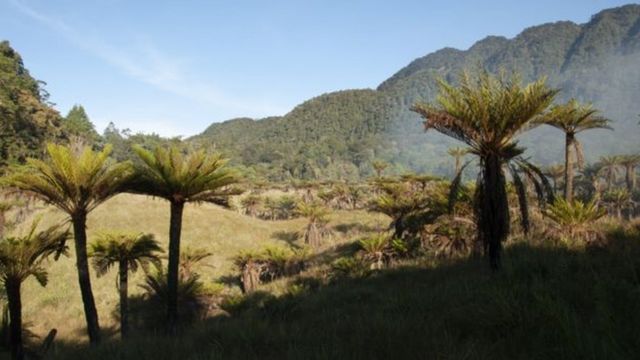
Botanists say New Guinea has more plant species than any other island in the world.
The world's largest tropical island (near the equator) recently recorded a variety of plants, revealing that there is a treasure trove of flower species. There are 13,000 species of New Guinea plants, two-thirds of which do not grow anywhere else in the world. These range from very small orchid flowers to large fern trees. The study, published recently in the scientific journal Nature, aims to "preserve one of the last important questions in science." "Identifying new plant species and giving them special names is the first step towards preserving them," said Tim Otterge, of the Royal Botanical Gardens. If we lost them, it would not be possible for them to be replanted because they are nowhere to be found except on this island. We have a special responsibility to protect these rare plants. " New Guinea has some of the safest ecosystems in the world, including coastal main groves, tropical rainforests and alpine grasslands. "New Guinea is a paradise island with a wide variety of flora and fauna," said Dr. Rodrigo Kumara Lert of the University of Zurich. "However, information about the island's flora has been scattered over the years, which has limited research." , Botanists have been collecting plant specimens here since the 17th century and they have been placed in different parts of the world, but only now have experts been able to combine all this information to create a complete list of plants on the island, such as Other places, such as Amazon. In the past, estimates of the number of plant species on the island ranged from 9,000 to 25,000. Experts have now identified more than 23,000 species with the help of more than 700,000 samples. 68% of them are found on this island alone. 20% of Papua New Guinea and 17% of Indonesian New Guinea are flower orchids. Of the new species, 29% are tree species. In comparison, the Amazon has 2.6 times more trees but 6.4 times larger area. New Guinea also has many rare rhododendrons and begonias that have never been mentioned before. The new list of plants will be used to plan how to preserve these plants. The International Union for Conservation of Nature, which lists endangered species, asks for plant names and geographical features to include them. More botanical research is needed for New Guinea, and DNA research of these plants is still to be done. Information on 2,812 species discovered in New Guinea since 1970 has been published. Experts believe that number will reach 4,000 in the next 50 years. Dr. Sandra Knepp of the Museum of Natural History in London says there is still much to discover. Regarding the recent research, he said that it is the basis for how many discoveries are to be made in the next few years.
















0 Comments